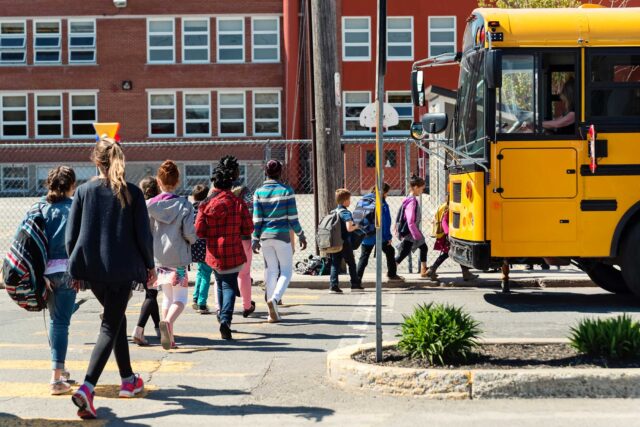Demographic projections from the California Department of Finance (DOF) suggest that California’s public K-12 school system is entering a long period of declining enrollment. By 2027-28, statewide enrollment is projected to fall nearly 7 percent (compared to 1.5% over the past decade). Enrollment is projected to shrink in about half of all counties, and declines are expected in more of the state’s larger counties.
Districts with declining enrollment face fiscal pressures, as state funding is tied to the number of students they serve. Declining enrollment also has important implications for the state budget. To help policymakers understand the effects of declines over the coming decade, we looked at recent district-level enrollment declines and assessed their consequences for districts as well as the state budget.
- Most district-level declines in student enrollment are large and long lasting. The typical multi-year decline persists over a decade or more and is greater than 20 percent. Enrollment does not generally rebound, so most districts must adjust to lower enrollment levels.
- District downsizing in response to enrollment declines does not necessarily lead to budget savings. District revenues often decrease each year as enrollment declines, but it is difficult to shed costs at the same rate. Some costs are fixed and districts lose economies of scale in some services (e.g., capital, maintenance, debt service) and staffing (e.g., administrative positions).
- Shrinking districts are cutting total expenditures but spending more per pupil. The state budget includes a “declining enrollment adjustment” that shields a district from a funding reduction for one year after a decline. This results in higher levels of per pupil spending in districts experiencing long-term declines, and helps districts maintain staffing ratios despite retaining a more experienced-and therefore more expensive-teaching staff.
- State spending on the declining enrollment adjustment will continue to increase. The state spent $925 million on these adjustments in 2018-19. As the K-12 population shrinks in the coming years, the cost of this adjustment will take up a growing share of the total K-12 budget.
- Declining enrollment could boost statewide per pupil funding. There is at least one silver lining: with continued economic growth, lower enrollment could result in funding increases for K-12 schools of up to $100 per student in each of the next several years. The reduction in the K-12 population will increase per pupil funding under Proposition 98, giving state policymakers additional resources to help districts facing multiple fiscal challenges.
Though most enrollment declines cannot be prevented, early awareness and planning can help districts adjust gradually and avoid larger, more difficult spending cuts. The state should provide technical assistance in enrollment planning and the longer-term operational changes that may be required in districts that experience significant declines. The state could also use additional funding generated by statewide declines to increase the base grant that districts receive for each student. This would help all districts address core funding challenges.
Click here to explore an interactive map showing enrollment trends and projections for all California counties.



